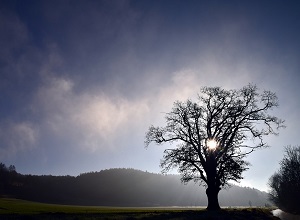 In an announcement that will not surprise anyone with experience of the maintenance of nuclear generation facilities, EDF Energy have admitted that they will have to delay the full return of its Heysham-1 and Hartlepool nuclear power plants until December, and in doing so reducing the UK’s already tight supply margins for the coming winter.
In an announcement that will not surprise anyone with experience of the maintenance of nuclear generation facilities, EDF Energy have admitted that they will have to delay the full return of its Heysham-1 and Hartlepool nuclear power plants until December, and in doing so reducing the UK’s already tight supply margins for the coming winter.
EDF had initially estimated a reconnection date of October but this has now been revised to a “phased return” between the end of October and the end of December 2014, at the earliest.
The news of the delay couldn’t come at a worse time for the already stretched capacity market with National Grid having announced extra measures in the face of heightening black out risks in Winter 2014/15.
The announcement stated that National Grid was extending its search for additional sources of temporary supplies, or STOR (Short Term Operating Reserve) to counter the emergency shutdowns at the EDF stations and the unexpected fires at two key coal-fired stations during recent months – Ironbridge in Shropshire and Ferrybridge in Yorkshire.
Adding to the capacity crunch, the planned closure of the gas-fired Barking power station in east London has also prompted National Grid and DECC to adopt an increasingly cautious short-term view about the capacity constraints the UK is facing.
National Grid’s previous position had been that the need for emergency back-up generating capacity this winter as “modest”, but this position has now been revised to highlight that there is “an increased level of uncertainty over the volume of plant that may be available in the market this winter”.
Such is the concern that National Grid announced emergency measures to pay currently mothballed and idle power stations to fire up through its “precautionary tender process” for Supplemental Balancing Reserve (SBR).
National Grid’s UK market operations director Cordi O’Hara said:
“This is a sensible precaution to take while the picture for this winter remains uncertain.
“At this stage we don’t know if these reserve services will be needed, but they could provide an additional safeguard”.
Ofgem as recently as June had claimed spare capacity of between 2.7GW and 5.4GW this winter which equates to between a 5% and 10% margin over peak levels of demand.
However the combined loss of the 7 coal, gas and nuclear plants has removed a further 3.7GW from the system and thereby has significantly eat into the previously predicted spare capacity.
Under the SBR contracted STOR generation plants would be required to ramp up generation between 0600 hrs and 2000 hrs over the November to February period in order to meet peak demand.
However the willingness to do so is by no means guaranteed with the STOR operators expecting and able to demand high rental and £/MWH costs from a captive buyer. National Grid’s appetite to meet such demands is yet to be seen and could even scupper the potential solution before it starts.
A National Grid spokesman explained:
“The actual volumes of SBR contracted, if any, will depend on how the situation evolves over the next two months, how the market responds, and whether prices offered in the tender offer value for money to consumers”.
Notwithstanding the SBR measures, demand side management (which requires specifically contracted large energy users to moderate their peak time grid based energy usage) is expected to be able to deliver a reduction in demand by 0.3GW over winter 2014/15. That however is no longer enough to protect the system.
With a “worst-case” capacity surplus of 2.7GW (as forecast by Ofgem in June) and overlaying the additional 3.7GW that will now be offline through Winter 2014/15, this 0.3GW demand side management will not be enough to prevent shortages and their ultimate result – black-outs and brown-outs.
Black-outs we all know about, the total loss of supply, but brown-outs, though not a new phenomenon are expected to potentially play an increasingly common role over the coming winter.
A brown-out is when the National Grid intentionally reduces voltage to ration electricity supplies. This is done in order to prevent a full-scale blackout. And it could, indeed is expect to, happen this winter, due to predicted power shortages.
Some commentators have suggested the risk of brown-outs has now risen from 0.1% to 10%, that’s a one hundred fold increase in the likelihood of electricity rationing over the coming months.
The impact of brown-out’s is not just inconvenience but also damage to appliances, specifically new generation technology such as TV set-top boxes, computers, Wi-Fi routers which can malfunction or sustain damage at unpredictable and lower voltage levels.
The import of the threat has risen to such a level that Ed Davey Secretary of State for Energy and Climate Change addressed the House of Commons to allay fears. Davey said:
“We have taken a number of measures to ensure the security of the UK’s energy supply, including introducing new electricity system balancing measures.
“The impact that that will have on our margins over the winter has already been taken account of in National Grid’s analysis and procurement plans.”
Whilst we remain on a knife-edge for the coming winter, the prognosis for future winters is even worse with the decommissioning and mothballing of plant set to go ahead regardless and any replacement facilities being yet to come online.
The spectre of black and brown-outs, last seen in the 1970s could become a feature of our energy market once again 40 years later with little sign of abatement. How on earth have our successive generations of politicians allowed us to get into this mess?
